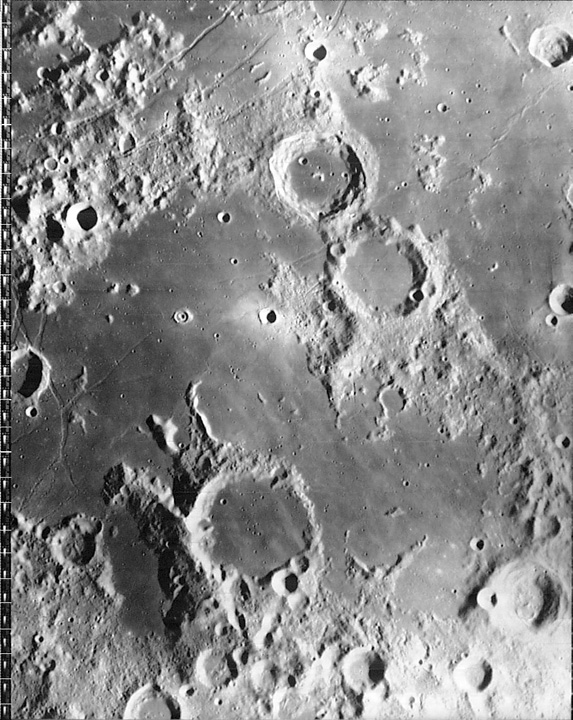
image by Lunar Orbiter IV & Charles Byrne
Nearly 40 years ago, in May 1967, Lunar Orbiter IV obtained the most valuable collection of lunar images yet assembled. One of the most frustrating things about those wonderful high res images are the horizontal lines that mark where separate scanned framelets were stitched together. Much of that work was done by hand using photographic strips, long before computers became omnipresent. Now Charles Byrne – who served as a system engineer for the Lunar Orbiter project in the mid-1960s - has striped away the stripes. He down-loaded the image files online at the Lunar & Planetary Institute and processed them with modern computer software to largely remove both the framelet boundaries and the scanning lines. This results in clean images that look like digital photographs. Byrne’s book is a handy reference to the best nearside lunar images. But there are a few things that I wish he had done differently. First, a cardinal sin: the individual plates are not labeled with the numbers of the plates of adjacent areas. Second, for odd reasons, plates are reproduced at three different scales. And finally, the images and text descriptions are printed sideways so that it is necessary to uncomfortably hold the book sideways to use it. Should you buy it? If, like me, you are an inveterate collector, that isn’t even a necessary question. But if you are a normal lunar observer, it is more problematic. If you are satisfied with the LPI striped images – and on your computer instead of in a book – you just saved $50!
Technical Details:
Lunar Orbiter IV image 131H3 showing Palus Epidemiarum.
List price $80; Amazon’s price $50.
Related Links:
Rükl chart 53 & 63
Yesterday's LPOD: Hidden River
Tomorrow's LPOD: Not James Bond; William Bond
COMMENTS?
Register, Log in, and join in the comments.



